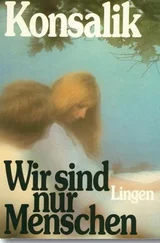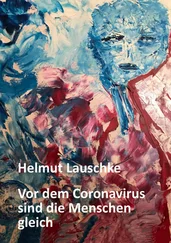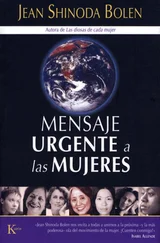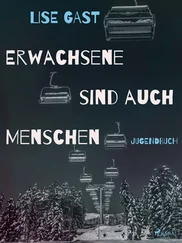52. Joseph Kraft, ‘RAND: Arsenal for Ideas’, Harper’s (July1960), 69.
53. Jeremy Bernstein, speaking in the programme ‘Project Orion’ (BBC4 TV, 2002).
54. Bernard Brodie, ‘Implications for Military Policy’, in Brodie, ed., The Absolute Weapon: Atomic Power and World Order (New York: Harcourt, Brace & Co.,1946), 76.
55. Herman Kahn, Thinking about the Unthinkable (New York: Horizon Press, 1962), review: JackRaymond, ‘A Grim Game for Us All’, NYT (17 June 1962), VII, 10.
56. Quoted in Fred M. Kaplan, The Wizards of Armageddon (New York: Simon & Schuster, 1983), 223.
57. Kenneth E. Boulding, ‘ World Economic Development: 1979 and Beyond by Herman Kahn’, Economic Development and Cultural Change , 29 (1981), 645.
58. Thomas Bell, quoted in ‘Herman Kahn, a Leading Thinker On War and the Future, Dies at 61’, NYT (8 July 1983), II, 7.
59. Donald Rumsfeld, after receiving the Hudson Institute’s James H. Doolittle Award on 14 May2003; see http: //www.whitehouse.gov/news/releases/2003/05/20030513-9.html.
60. Herman Kahn, On Thermonuclear War (Princeton University Press, 1961;1st edn 1960), 45–6.
61. James R. Newman, ‘Two Discussions of Thermonuclear War’, Scientific American (Mar. 1961),200, 197.
62. Kahn, On Thermonuclear War , 228.
63. Arthur Herzog, ‘Report on a “Think Factory”’, NYT (10 Nov. 1963), VI, 42.
64. ibid.
65. Herman Kahn, ‘A “Doomsday Machine” – Last Word in the Arms Race?’, US News and World Report (1 May 1961),61, 64.
66. Herman Kahn, On Thermonuclear War , 145.
67. John Baxter, Stanley Kubrick: A Biography (London: HarperCollins, 1997), 167.
68. Kahn, On Thermonuclear War ,145–51.
69. ibid.,145–51, 524.
70. Peter Bryant, Red Alert (New York: Ace Books, 1958),138; published in the UK as Two Hours to Doom (London: Boardman, 1958). The cobalt bombs are described on p. 79.
71. Bosley Crowther, ‘ Dr Strangelove , a Shattering Sick Joke’, NYT (30 Jan. 1964), 24.
1. Szilard to R. A. Spitz, 29 Mar. 1963; quoted in William Lanouette with Bela Silard, Genius in the Shadows: A Biography of Leo Szilard, The Man Behind the Bomb (University of Chicago Press, 1994; 1st edn 1992), 461.
2. William L. Laurence, ‘Atomic Forecast’, NYT (2 Dec. 1962), IV, 7.
3. Eugene Rabinowitch, ‘New Year’s Thoughts 1963’, BAS , 19 (Jan. 1963), 2.
4. Glenn T. Seaborg, BAS , 19 (Jan. 1963), 2.
5. Seaborg, interview in Laurence, ‘Atomic Forecast’.
6. Eugene P. Wigner, ‘Twentieth Birthday of the Atomic Age’, NYT (2 Dec. 1962), VI, 34, 126.
7. ‘Message from President John F. Kennedy to the Bulletin of the Atomic Scientists ’, BAS , 18 (Dec. 1962), 2.
8. Kubrick, interviewed by A. H. Weiler, NYT (31 Dec. 1962).
9. Letter from Alan Earney, Peter George’s English publisher, ‘Kubrick’s Pies’, Independent (11 Mar. 1999), 2.
10. Kubrick, quoted in Eugene Archer, ‘How to Learn to Love World Destruction’, NYT (26 Jan. 1964), II, 13.
11. ‘Peter George, 41, British Novelist’, NYT (3 June 1966).
12. Terence Young, dir., Dr No (Eon, 1962).
13. Peter George, Dr Strangelove (London: Souvenir, 1999; 1st edn 1963), 36. This is a novelization based on the screenplay.
14. ibid., 54, 156.
15. Kubrick, in conversation with Alexander Walker, in Walker, Peter Sellers: The Authorized Biography ; quoted in Vincent LoBrutto, Stanley Kubrick: A Biography (London: Faber, 1998), 239.
16. Lewis Mumford, letter, “‘Strangelove” Reactions’, NYT (1 Mar. 1964), II, 8; Mumford was responding to Bosley Crowther’s reviews: ‘ Dr Strangelove , a Shattering SickJoke’, NYT (30 Jan. 1964), 24, and ‘Is Nothing Sacred?’, NYT (2 Feb. 1964), II, 1.
17. Crowther, ‘ Dr Strangelove , a Shattering SickJoke’.
18. Tom Milne, ‘Dr Strangelove’, Sight and Sound 33 (Winter 1963/4), 37–8.
19. John Coleman, ‘Dr Strangelove’, New Statesman (31 Jan. 1964), 178.
20. ‘Debate over Strangelove Film Echoes Happily at the Box Office’, NYT (10 Feb. 1964).
21. ‘Late-Night Showings at Columbia Cinema’, Times (6 Feb. 1964), 6.
22. Geoffrey Perrett, A Dream of Greatness: The American People 1945–1963 (New York: Coward, McCann, & Geoghegan, 1979), 726.
23. Brian Aldiss, ‘The Real Kubrick’, Observer (14 Mar. 1999).
24. Sharon Ghamari-Tabrizi, ‘Dr Strangelove’, note 11, http: //www.visualmemory.co.uk/amk/doc/0097.html.
25. Szilard, quoted in Lanouette, 466.
26. Quoted in Tristram Coffin, ‘Leo Szilard: The Conscience of a Scientist’, Holiday (Feb. 1964), 64–7, 92–9.
27. ibid.
28. James Yaffe, ‘Of Fission and Fish’, Saturday Review , 44 (29 Apr. 1961), 16.
29. ‘Leo Szilard Dies; A-Bomb Scientist’, NYT (31 May 1964), 1, 77.
30. ‘Leo Szilard’ (editorial), NYT (1 June 1964), 28.
31. Teller, writing in Disarmament and Arms Control (Autumn 1964), 453; quoted in Lanouette, 479.
32. Quoted in Martin Walker, The Cold War and the Making of the Modern World (London: Vintage, 1994), 179.
33. ‘A Weapon to Kill Everybody… or Just Cold-War Bluster?’, US News and World Report (28 Sep 1964), 8.
34. ibid.
35. Bruce G. Blair, ‘Russia’s Doomsday Machine’, NYT (8 Oct. 1993), A, 35. The story was not long in reaching Britain: see Steve Doughty, ‘Doomsday at Mercy of a Faulty Switch’, Daily Mail (9 Oct. 1993), 12.
36. George, 109.
37. Blair, 35; for further information see Steven J. Zaloga, The Kremlin’s Nuclear Sword: The Rise and Fall of Russia’s Strategic Nuclear Forces, 1945–2000 (Washington: Smithsonian Institution, 2002).
38. Bruce Blair, ‘We Keep Building Nukes For All the Wrong Reasons’, Washington Post (25 May 2003), also at http: //www.cdi.org/blair/newnukes.cfm.
39. Zaloga, 199–201.
1. Damon Albarn, quoted in ‘Marchers Revive Nuclear Protest’, 9 April 2004, http: //news.bbc.co.uk/1/hi/uk/3613393.stm.
2. Leo Szilard, ‘Answers to Questions’, dictated 9 May 1963; in CW2 , 229.
3. ‘Government Say Keep Away from Bases’, Times (8 Dec. 1961), 14.
4. ‘Minister Sums up Invasion of Wethersfield – A Flop’, Times (11 Dec. 1961), 6.
5. ‘Shabby “Success”, Says Lord Russell’, Times (11 Dec. 1961), 6.
6. Bernard Charles Cyril Smith, ‘Application to Local Tribunal by a Person Provisionally Registered in the Register of Conscientious Objectors’ (Form N.S. 14), 7 Oct. 1943; the court hearing before His Honour Judge G. P. Hargreaves was on 4 Nov. 1943, as recorded on ‘Form N.S. 14 (continuation)’; copies in the author’s possession.
7. Bernard Smith to Avril Haas, Dec.? 1959.
The world’s first nuclear reactor, CP-1, goes critical on 2 December 1942. (Courtesy US National Archives and Records Administration, photo no. 326-PV-4(4))
The University of Chicago Round Table , 26 February 1950. ( New York Times /Redux)
Research scientist Sanford Lawrence Simons – the ‘plutonium collector’.(AP/EMPICS)
Marie and Pierre Curie pictured in Vanity Fair (1904). (Science Museum Pictorial/Science and Society Picture Library)
Читать дальше












